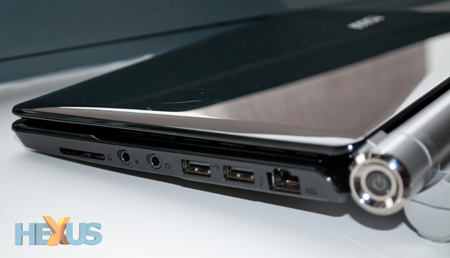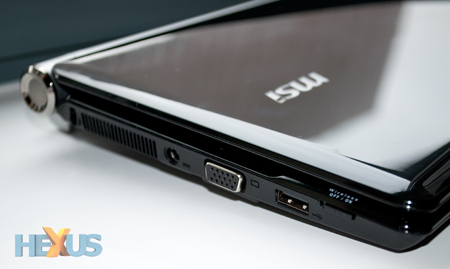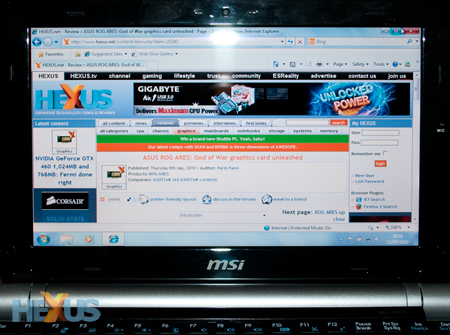A change in the Wind
Keyboard and trackpad
In keeping with the overall design refresh, MSI outfits the Wind U160 with a chiclet keyboard that a) looks the business, b) is surprisingly pleasant in use and c) is practically identical to the keyboard found on ASUS's rival Eee PC 1005PE.
There's no harm in adopting a tried-and-trusted layout, and the Wind U160's keyboard ticks many of the right boxes; we were able to touch type at pace with very few errors, and the keys remain nice and quiet in use. We sensed the miniaturised right shift key could hamper the typing experience, but such a problem never materialised. The key, albeit small, is perfectly placed and wasn't missed once during use.
Ensuring long spells of input go uninterrupted, a shortcut key allows for the Sentelic trackpad to be disabled, and the little flex in the body of the keyboard isn't enough to detract from the overall experience.
Though, whilst the keyboard gets a solid thumbs up, the aforementioned trackpad delivers mixed results. Sitting flush in the U160's chassis, it's visually attractive, easy to locate thanks to a series of slight bumps, and, though the trackpad surface takes some getting used to, it soon becomes comfortable and proves to be pleasantly responsive.
However, it is small and accompanied by a very thin single mouse bar that's slippery, too stiff and unable to maintain the standards set by the keyboard. We'd prefer larger, dedicated left and right mouse buttons that don't respond with a click.
Multi-touch support isn't featured, with MSI instead opting to make use of Sentelic's finger-sensing technology. Using the bundled software, the trackpad can be configured to support on-pad click and both horizontal and vertical scrolling by holding your finger on the relevant edge of the pad. The unorthodox technique may feel foreign at first, but it works remarkably well once you've shaken the habit of swiping to scroll.
Ports and software
To the right of the netbook, there's the power button - it's located on the cylindrical hinge and illuminates a sharp blue backlight when turned on - along with Ethernet, two USB ports, headphone and microphone jacks, and a multi-card reader.
And, on the left, the U160 provides a dedicated toggle switch to turn on/off the built-in wireless, a third USB port, VGA out, a connector for the small bundled power adapter, an air vent and a Kensington Lock slot.
Fresh from the factory, MSI pre-loads the system with Windows 7 Starter and a short list of bundled applications, including a 60-day trial of Microsoft Office Home and Student 2007, a trial version of Norton Internet Security, Microsoft Windows Live Essentials, MSI's own BurnRecovery utility, and, for use with the integrated camera, ArcSoft's WebCam Companion and MSI's EasyFace Logon. The latter allows the user to logon via facial recognition, but MSI's below-average software does its best to ensure the feature remains little more than a gimmick.
Display, speakers, noise and heat
For a sub-£350 system of this size, the Wind U160's 10in LED-backlit display is generally pleasant. Plenty bright with ample colour and contrast, it's easy to read both indoor and out, and ideal for watching movies on the go.
It isn't perfect, however. The glossy finish results in a highly-reflective surface, and vertical viewing angles are poor, with colours looking washed out at any angle other than head-on. As expected, the netbook-standard 1,024x600 resolution continues to feel cramped when tasked with displaying a Windows desktop.
It's by no means the best netbook display we've ever seen, but it's perfectly suitable for everyday netbook tasks.
The same could be said for the system's stereo speakers. Housed in the underside of the chassis, there's little low-frequency response and sound can become muffled when used on a lap. On a flat surface, however, mid-to-high tones are surprisingly crisp and clear.
During extended use, we found the system became mildly warm under the area housing the processor, without ever becoming too hot. Unfortunately, the fan keeping the netbook cool is a little loud for our liking; it's clearly audible when the system is idle, and borders on noisy when under load.













